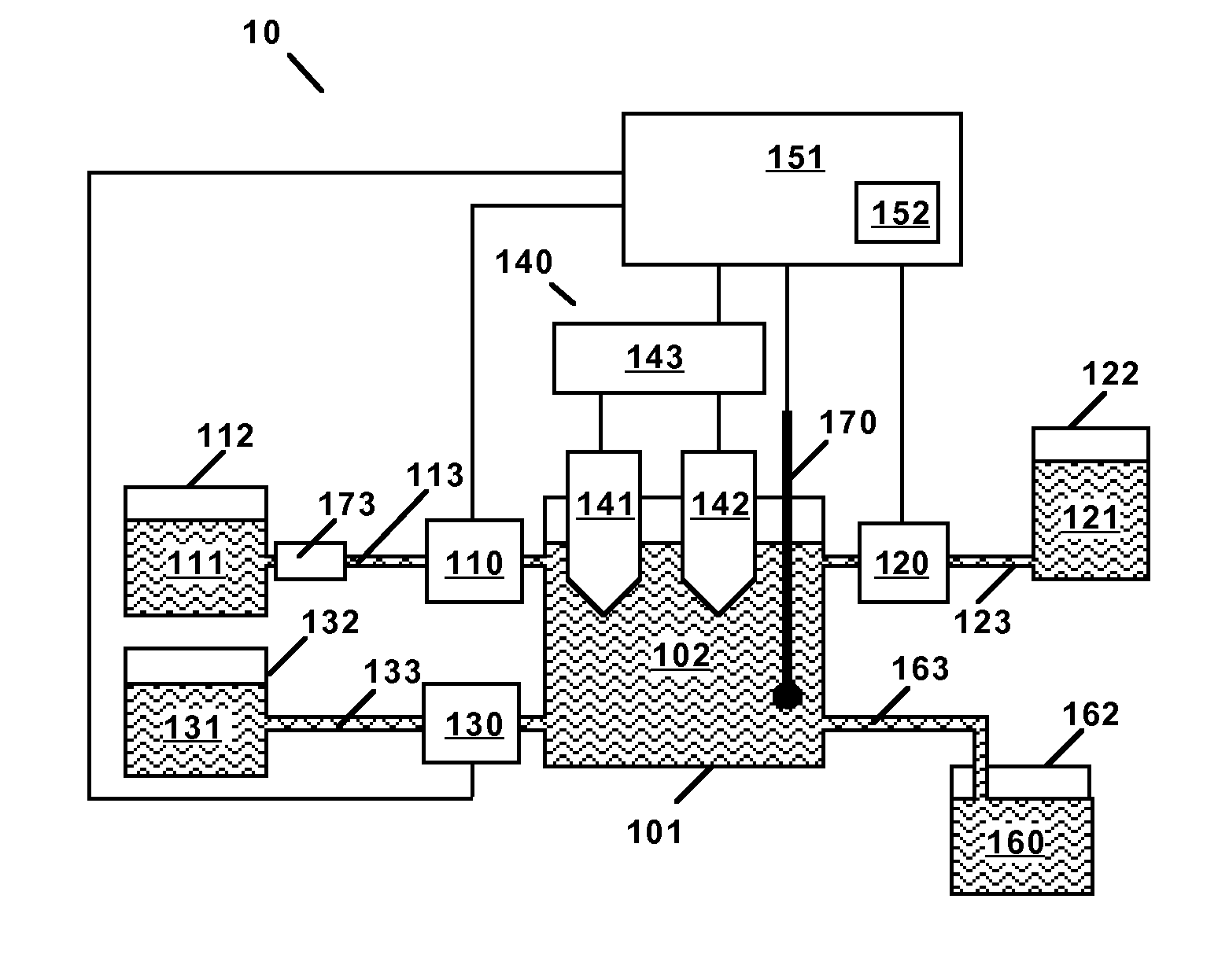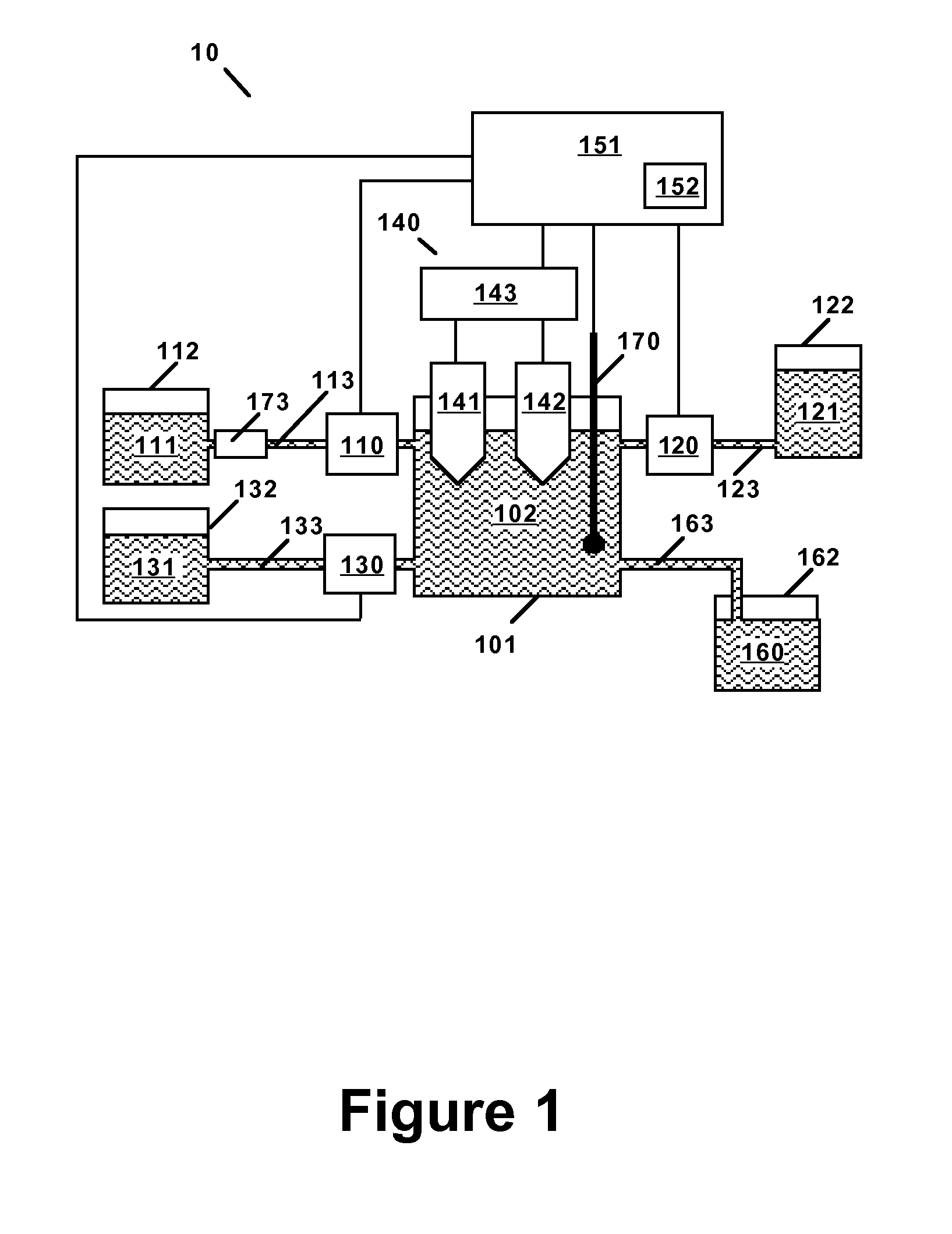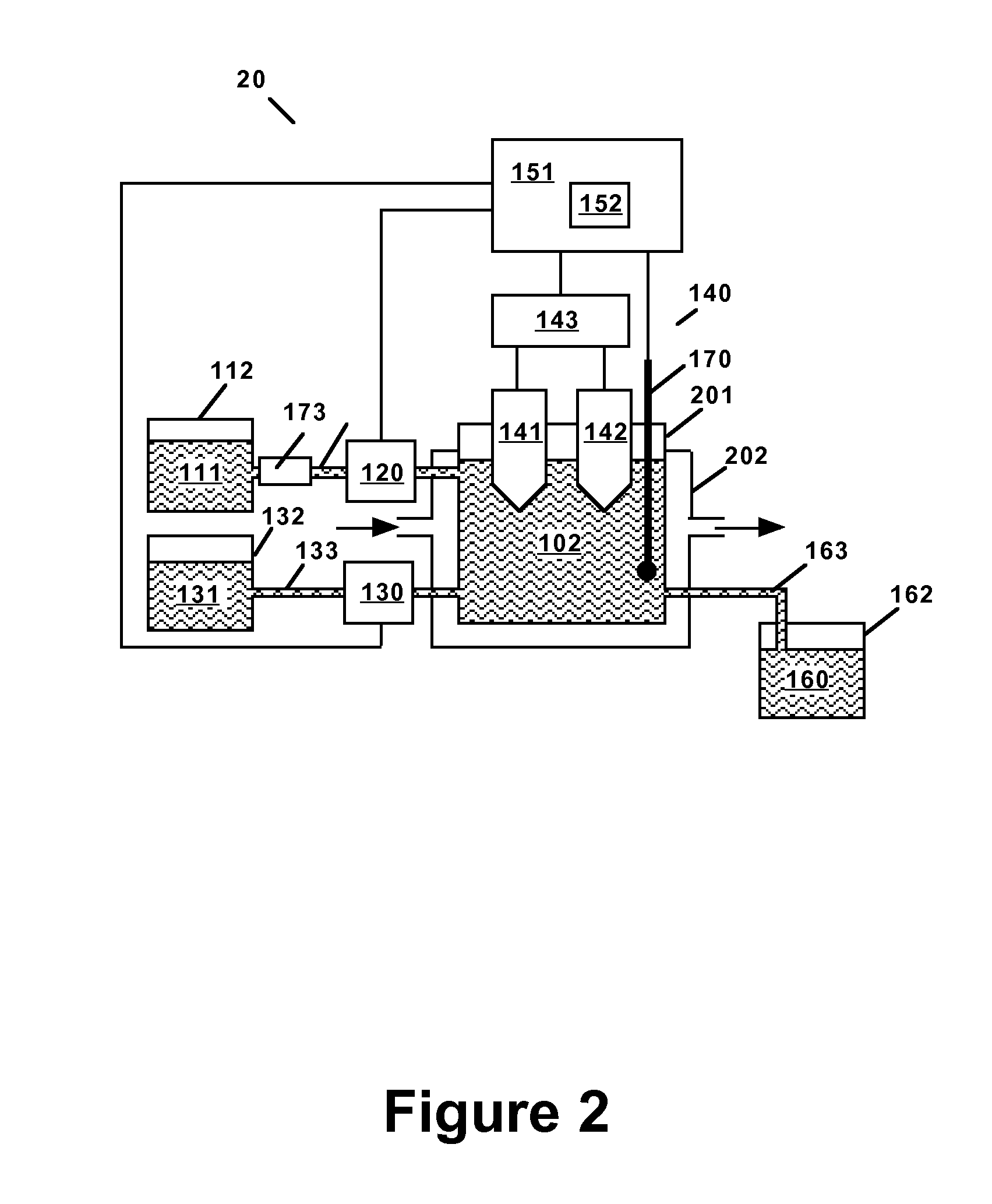Analysis of silicon concentration in phosphoric acid etchant solutions
- Summary
- Abstract
- Description
- Claims
- Application Information
AI Technical Summary
Benefits of technology
Problems solved by technology
Method used
Image
Examples
example 1
[0059]FIG. 3 and Table 1 summarize the results for measurements of the potential of the fluoride ion specific electrode (FISE) as a function of the concentration of silicon ions in the etchant solution for the various reagent solutions. For the reagent solutions comprising 10.0 g / L KF in acetic or propionic acid, the calibration plots in FIG. 1 are linear and practically identical. It is evident that the sensitivity of the FISE potential to the concentration of silicon ions in the etchant solution (as indicated by the slopes of the plots in FIG. 3 and tabulated data in Table 1) is a factor of two greater for the reagent solutions comprising a carboxylic acid (acetic acid or propionic acid) compared to that for the reagent solution not comprising a carboxylic acid. Addition of the reagent solution not comprising a carboxylic acid to the etchant solution also resulted in formation of a precipitate, which reduced the reproducibility of the results, whereas no precipitation was observed...
example 2
[0060]To further illustrate the efficacy of adding a carboxylic acid to the test solution to improve the sensitivity to silicon ions in the etchant solution, a series of reagent solutions comprising 10.0 g / L KF and various volume fractions of water and acetic acid was prepared by mixing a solution A comprising 10.0 g / L KF in water and a solution B comprising 10.0 g / L KF in 100% acetic acid in various proportions. Table 2 and FIG. 4 summarize the results. The sensitivity to the concentration of silicon ions is seen to increase monotonically with increasing volume fraction of reagent solution B comprising acetic acid.
TABLE 2Silicon Ion Sensitivity for Mixtures of Reagent Solutions A and BSolution A VolumeSolution B VolumeSolution BSensitivity(mL)(mL)Volume Fraction(mV / ppm)0.0015.001.000.1033.0012.000.800.0864.5010.500.700.0756.009.000.600.0717.507.500.500.068
PUM
 Login to View More
Login to View More Abstract
Description
Claims
Application Information
 Login to View More
Login to View More - R&D
- Intellectual Property
- Life Sciences
- Materials
- Tech Scout
- Unparalleled Data Quality
- Higher Quality Content
- 60% Fewer Hallucinations
Browse by: Latest US Patents, China's latest patents, Technical Efficacy Thesaurus, Application Domain, Technology Topic, Popular Technical Reports.
© 2025 PatSnap. All rights reserved.Legal|Privacy policy|Modern Slavery Act Transparency Statement|Sitemap|About US| Contact US: help@patsnap.com



